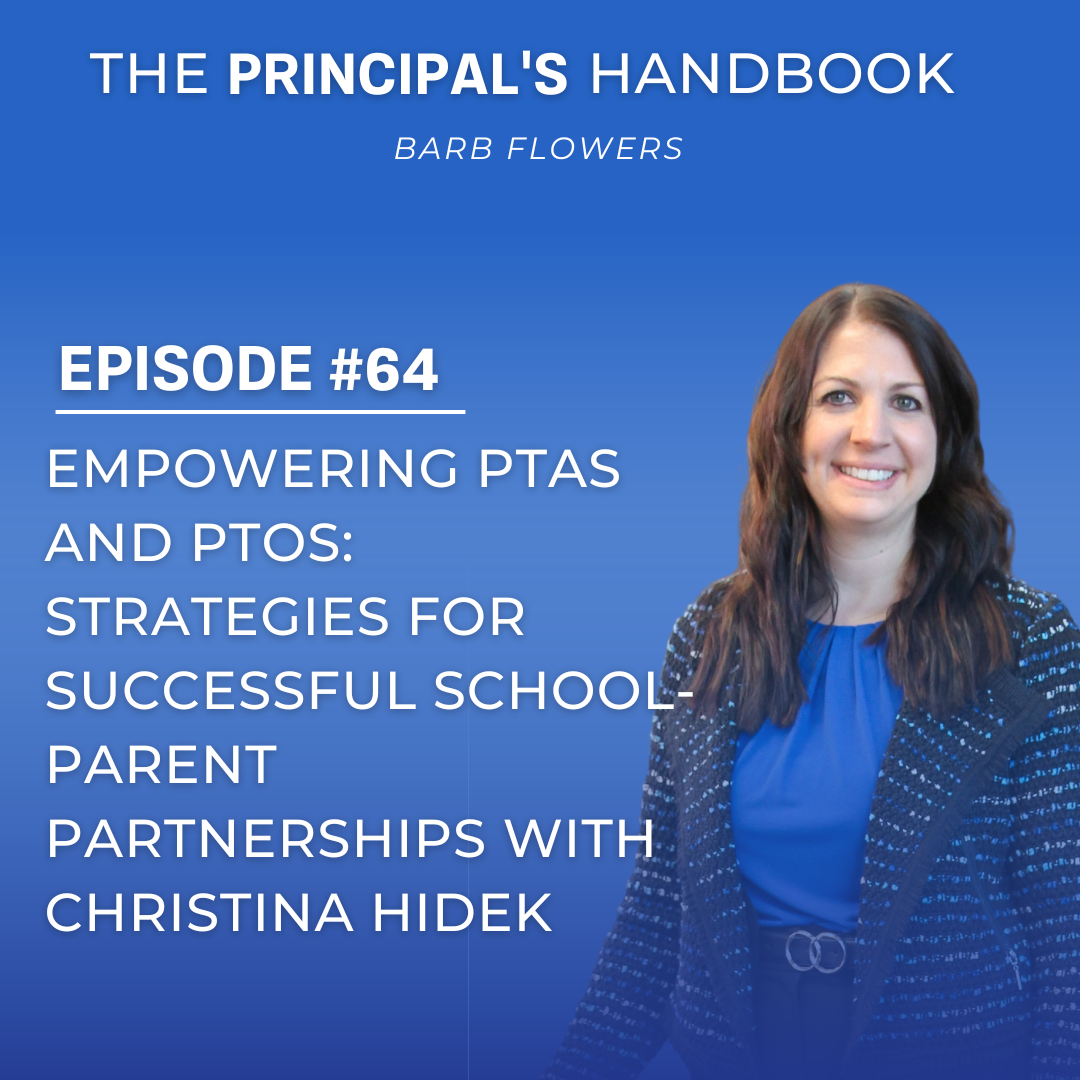🎙️ [00:00]
Welcome to The Principal’s Handbook! I’m your host, Barb Flowers, and in today’s episode, I’m sharing practical strategies to help you navigate your time better as a school leader.
Time management is one of the biggest challenges principals face. You’re technically in control of your schedule—but in reality, your day often feels out of your control. Unlike the predictable routine of a classroom teacher, your schedule changes constantly due to the unexpected needs of staff, students, and families.
So how do you stay on top of your responsibilities while staying sane? Let’s talk about it.
🎙️ [01:00]
One of the keys to reducing stress as a principal—like we talked about in Episode 19—is learning to manage your time just as much as your mindset. The better we use our time during the school day, the less we take home, and the less stress we carry into evenings and weekends.
Unfortunately, many principals feel constant guilt about how they allocate their time. I’ve been there. I’ve struggled with how to balance being visible in the building with getting critical office work done—evaluations, paperwork, emails, reports, state mandates, and more.
Then there’s the challenge of work-life balance. And let me be clear: I don’t mean a perfect 50/50 split. That doesn’t exist. I’m talking about having a rhythm where you’re meeting your professional responsibilities without sacrificing your personal well-being and time with your family.
We Need to Rethink the Narrative Around Time
Let’s start with the story we tell ourselves. Think about the last time someone asked how you’re doing. Did you answer, “Busy”? Most of us do—and we say it automatically. We wear busyness like a badge of honor, even when it’s draining us.
But what if we stopped telling ourselves that story? What if instead of constantly saying “I don’t have time,” we actually evaluated how we’re spending time—and whether it’s aligned with our purpose?
Common Time Management Pitfalls (and What to Do Instead)
Let’s break down four common problems with time management—and what to do instead.
1. The Unfinished To-Do List
I used to make long to-do lists and rarely finished them. There were just too many unexpected things popping up throughout the day.
What changed everything for me was identifying the must-do tasks—and then scheduling them. One of my non-negotiables? Walking classrooms every day. That’s not just on a list—it’s on my calendar. I block time for it daily so it always gets done.
Pro tip: If it’s not scheduled, it’s not guaranteed. Your calendar should reflect your priorities, not just your obligations.
2. Only Planning Day-to-Day
For a long time, I only looked at my daily calendar. It helped me manage each day, but I often forgot to prep for upcoming meetings or deadlines. I wasn’t thinking ahead.
The shift? Planning by the month, not just the day.
Looking ahead helps you align meetings, goals, and building initiatives. It allows you to be proactive instead of reactive. And it ensures you don’t miss things or show up unprepared simply because they weren’t on today’s radar.
3. Lack of Clarity Around Building Goals
When you don’t have clear goals, your day is filled with tasks—but not always with purposeful action. Strategic time management starts with asking:
What are the goals for my building?
What actions support those goals?
How can I structure my week to move those goals forward?
For example, if your school goal is to improve reading proficiency, your actions should reflect that—attending reading-focused PLCs, meeting with your reading coach, and reviewing data regularly.
Make sure your calendar reflects your leadership intentions, not just your operational obligations.
4. Spending Time on Low-Impact Activities
Principals juggle a lot—but not all tasks are equal. While admin tasks and emails are necessary, they shouldn’t dominate your day.
The solution? Define your high-impact leadership activities and make them non-negotiable.
For me, that includes:
-
PLC attendance focused on instructional planning
-
Walkthroughs with feedback
-
Data meetings tied to student growth
-
Coaching conversations with teachers
Those are the activities where I have the biggest influence on instruction and student outcomes. So I protect time for them.
Quick Recap
To manage your time more effectively as a principal:
-
Schedule your top priorities (don’t just list them)
-
Plan by the month, not just the day
-
Align your time with your goals
-
Identify and protect time for high-impact activities
Bonus Tip: Do a Time Audit
One of the best ways to improve how you use your time is to first understand how you’re spending it. That’s why I created a free time management resource that includes a simple time audit.
It’ll help you reflect on how your time is currently spent, what’s working, and what needs to shift.






